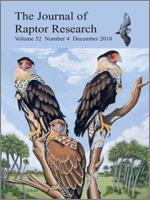Avian communal roosts provide insight into evolution and serve as focal points for conservation. Nonbreeding Crested Caracaras (Caracara cheriway; hereafter caracaras) use communal roosts, but evolutionary implications have not been explored. Though nonbreeding caracaras are nonmigratory, the scientific literature fails to explain seasonal differences in their movement and survival concurrent with seasonal consistency in their habitat and social ecology. In the Social Refuge–Territory Prospecting hypothesis we propose, socially subordinate nonbreeding caracaras precluded from breeding by habitat limitation use communal roosts as social refuges to avoid aggression from dominant territory holders during nonbreeding seasons, and engage in territory prospecting during breeding seasons. Communal roosts thus become central places from which to forage not for food, but for a breeding territory. Because foraging gains are stored as remembered information, competition costs resulting from public information are preempted. For the Social Refuge–Territory Prospecting hypothesis to be valid, two criteria need to be met. First, communal roost use needs to be higher during nonbreeding seasons. Second, a measure of fitness needs to be used to evaluate the hypothesis as an evolutionarily stable strategy. To meet these criteria, in this study we report that numbers of nonbreeding caracaras using a communal roost in Florida are higher during nonbreeding seasons (mean = 111.8 individuals / night) than during breeding seasons (mean = 60.7 individuals / night) as counted from August 2006–April 2009 (n = 407 counts). We also compare differential survival by season from previous work to demonstrate that by limiting exploratory movements to times when prospecting is most informative, nonbreeding caracaras balance maximizing survival against the likelihood of securing a breeding territory. Our hypothesis provides a unifying explanation for otherwise unexplained paradoxes in the ecology of nonbreeding caracaras, and may be useful in guiding conservation and expanding our understanding of the ecology of other communally roosting birds.
How to translate text using browser tools
1 December 2018
Evolution of Communal Roosting: A Social Refuge–Territory Prospecting Hypothesis
James F. Dwyer,
James D. Fraser

Journal of Raptor Research
Vol. 52 • No. 4
December 2018
Vol. 52 • No. 4
December 2018
Caracara cheriway
Crested Caracara
floater
habitat limitation
information center hypothesis
nonbreeding
public information




